


Having Fun With Nature
Attracting Butterflies
| Birds |
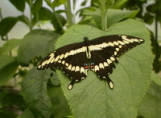

Copyright © Red Gate Farm 2012. All rights reserved.
Tips
Butterflies
are some of the prettiest animals you can attract to your yard.
They look very fragile, but it's not unusual to find older butterflies with large portions of their wings missing, and still doing fine.
During our hot Texas summers the butterflies need water and lots of it. We use rainwater, but if you use tap water let it rest for 24 hours so the chemicals dissipate.
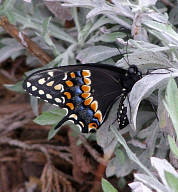

Hackberry Butterfly on a Hummingbird Feeder

Food
Adult butterflies will live on nectar plants, sugar syrup, and even rotting fruit.
Butterfly larva need plants such as fennel,dill, and rue for protection and food as they grow.
Plant both larval and nectar plants and you can watch generations of butterflies

Sugar Syrup
Both Hummingbirds and Butterflies like sugar syrup.
Don't buy that hummingbird syrup you find in the store; if red dye is bad for us, imagine what it will do to a hummingbird.
Mix 4 parts water with 1 part sugar and you have a clear, weak syrup that both animals love.
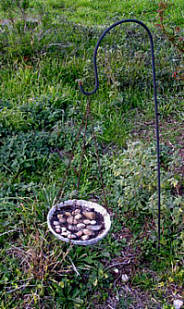

We also use shallow containers with rocks in them to water the butterflies, and bees, too. We do this because they can't swim.
Even with taking these precautions, you still may find yourself fishing a bee or butterfly out of the water.
Black Swallowtail
Insect Watering Station
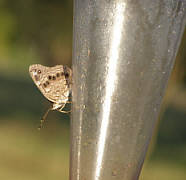

Black Swallowtail Caterpillar on Rue
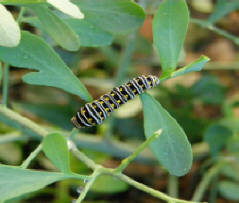

Gulf Fritillary Caterpillar on a Passion Vine
Like everything else, butterflies need food. But as they mature, their diet changes.
Adult females lay their eggs on "host" or "larval" plants. The egg hatches and a young caterpillar emerges.
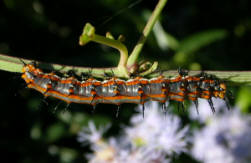

The caterpillar will progress through 5 stages of development, getting larger with each stage. The plant where the egg was laid provides the nutrition for the caterpillar.
There is always more than 1 egg, so the many maturing larva can eat a plant to the ground. We plant extra parsley, dill, and fennel, knowing we'll lose some to the butterflies. We are also very careful harvesting our herbs!
By selecting the appropriate larval plant, you can attract the butterflies you want. That's pretty cool!
Ruby-throated Hummingbird
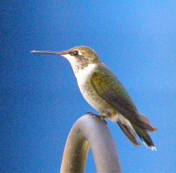

Gulf Fritillary Feeding on Turk's Cap
Io Moth Caterpillar
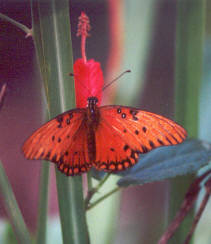


Shelter
Butterflies do fine is you provide shrubbery and trees for them to find shelter.
Butterfly boxes are generally not a good idea. Often wasps will live in these boxes and kill the butterflies.
Once the caterpillar secretes a chrysallis and the new butterfly emerges, it's done with the larval plant (except for egg laying). Now the new butterfly feeds on nectar plants, much the same plants that attract hummingbirds.
The PDF files below list larval and nector plants for butterflies and Texas plants that attract hummingbirds.
Hummingbird Plants for Texas
Butterfly Plants
Ruby-throated Hummingbird
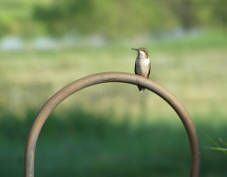

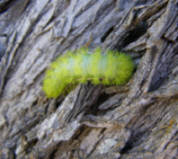

The National Audubon Society Field Guide to North American Butterflies by Robert Michael Pyle lists butterflies' ranges, habits, and host and nectar plants.

